The Roots of Public Health and CDC
Marine Hospital Service
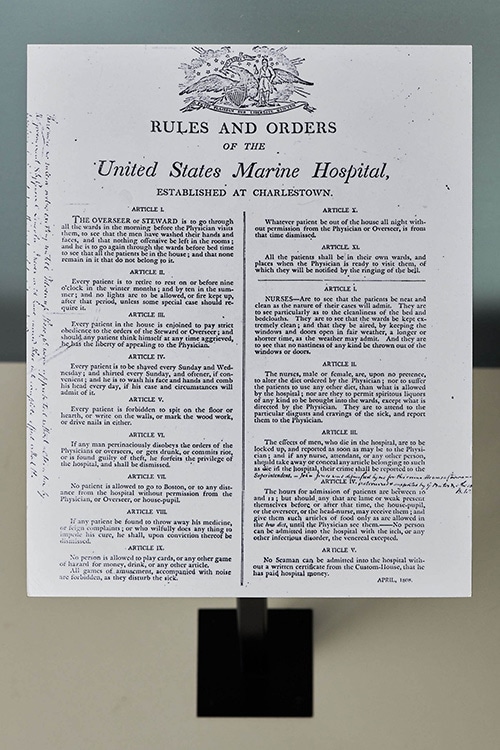
The nation’s first public health agency, the Marine Hospital Service (MHS), formed in 1798 to care for sick and injured seamen. The agency consisted of a series of hospitals with personnel who provided medical care.
The Rules and Orders from one of those hospitals, the Charlestown Marine Hospital, gives a glimpse into the conditions and challenges in hospitals during this time. Among the fifteen rules for the hospital, printed on a thin plaque are the words: “every patient is to be shaved Sunday and Wednesday,” and “every patient is forbidden to spit on the floor.”
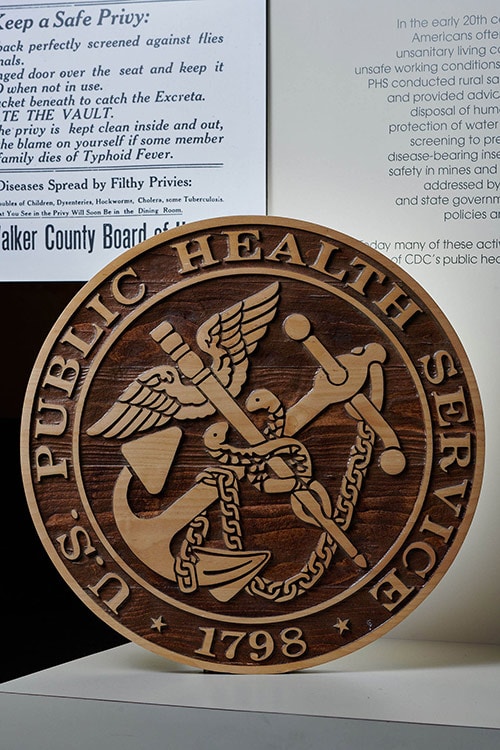
The large wooden seal of this program stands two feet in diameter. The round seal is made of polished, carved wood and consists of three symbols: 1) a caduceus, 2) a fouled anchor, and 3) the year 1798. The caduceus depicts two snakes wrapped around a winged staff, or stick, and it symbolizes medicine. The fouled anchor, or anchor wrapped with chain, symbolizes a seaman in distress. The year 1798 is when the MHS was formed, and it is written below the crossed images.
Over time, the Marine Hospital Service’s duties increased outside of the seamen population, and it became responsible for preventing the spread of contagious diseases throughout the United States. A contagious disease is any disease that can spread from one person to another, such as flu or the common cold. In 1902, the agency’s name changed to Public Health and Marine Hospital Service, and finally in 1912, to reflect its growing responsibilities, the agency was renamed the United States Public Health Service (USPHS). The wooden seal discussed earlier remained the same through the name changes and is still used today.
The Expanding Mission of Public Health
Initially, the USPHS’s primary task was quarantining persons on ships. Quarantine separates and restricts the movement of people who were exposed to a contagious disease to see if they become sick. The word itself means “forty days,” which was the length of time quarantine lasted at first, but soon changed to twenty-one days. Quarantine was critical before antibiotics were developed and remains critical today for the prevention of certain diseases that have no treatments.
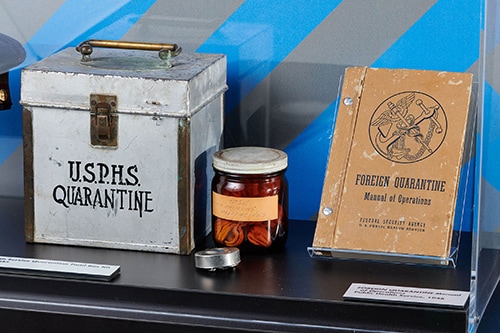
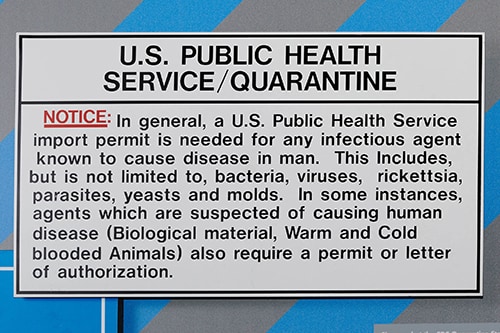
Artifacts pictured in this section that relate to the U.S. Public Health Service’s quarantine work include a medical kit and a large metal sign from Atlanta’s Hartsfield-Jackson International Airport. The kit is a metal cube-shaped box, with a handle on the top and words USPHS QUARANTINE stenciled in black, capitalized, letters. This is an example of a medical kit a USPHS Officer around 1920 may have used to evaluate a potentially sick person. The large metal sign is from the airport quarantine station. The quarantine station at Atlanta’s airport is one of the United States’ twenty quarantine stations located at every entry port, border crossing, and San Juan, Puerto Rico. These stations help monitor the movement of potentially sick persons between countries and are critical during epidemics, when a disease spreads rapidly through a community, country, or across several countries. Both objects show the long-standing importance of quarantine activities inside the United States and at the borders.
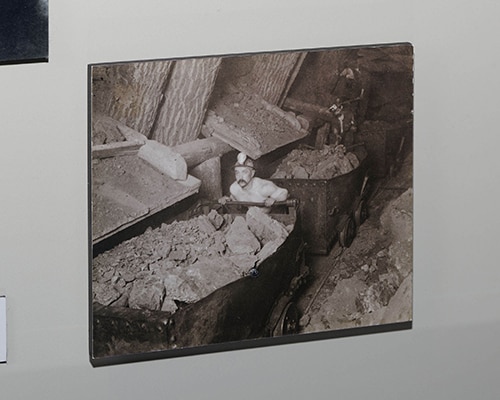
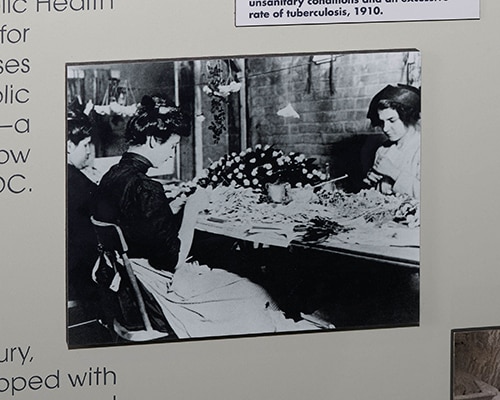
Here are two photographs: one of women making cloth flowers in a factory in 1910 and another of a copper miner hauling overloaded carts out of a mine. Both images show the grim environments in which many people worked and are further examples of the changing role of the USPHS. The U.S. Public Health Service tried to improve these workplaces by identifying unsafe working and living conditions and making recommendations for how to keep these workers safe and healthy.
While the USPHS continues to work to improve the health of the U.S. today, one USPHS program created in 1942 – the Malaria Control in War Areas program (MCWA) — is very important to CDC’s history.
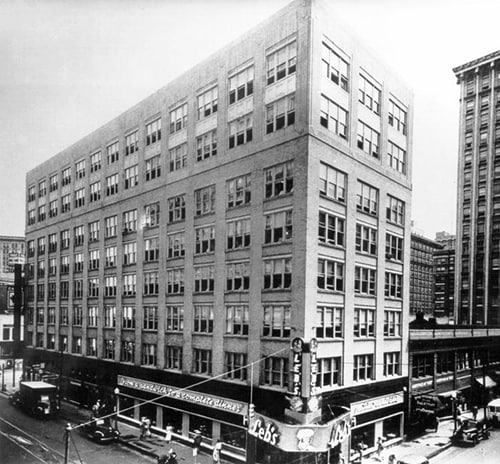
At its founding, CDC had around 400 employees, most of whom formerly worked in the MCWA. The CDC office, pictured here, was in the former MCWA headquarters, the eight-story “Volunteer Building” on the corner of Peachtree Street and 7th Street. CDC occupied two floors in this building and was present at a few other sites throughout the Atlanta area, including Chamblee and Lawrenceville.
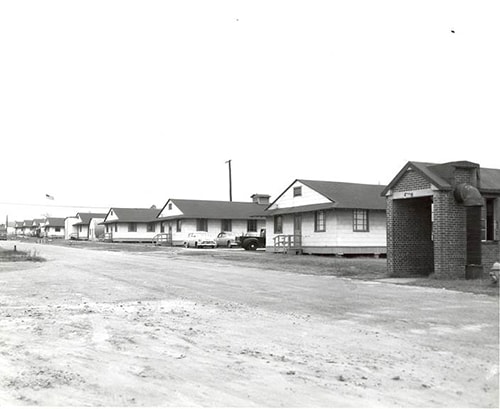
Photographs also show the Chamblee satellite campus consisting of reconfigured one-story, light-colored, old barracks and portable buildings, which housed the majority of the fledgling CDC’s laboratories. To consolidate multiple campuses into one, Robert Woodruff, Coca-Cola chairman and long-time board member of neighboring Emory University, made possible the deeding of 15 acres to the U.S. Public Health Service in 1947 for CDC.
According to agency folklore, CDC employees each contributed ten cents for a token payment of $10 – a bargain, even then. Over time, CDC’s name has officially changed several times, and the number of staff has grown to between 15 and 16 thousand, but the mission of protecting the health of the US has remained the same, and the initials have remained CDC.
Dr. Mountin’s Uniform
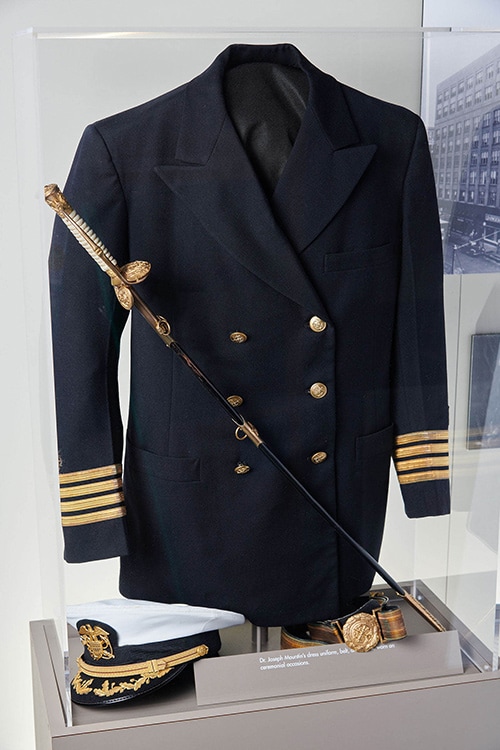
Seen here is Dr. Mountin’s ceremonial USPHS uniform, which was worn at formal events. The uniform consists of a long-sleeved, blue wool coat, a white and blue hat, leather belt, and ceremonial sword. The U.S. Public Health Service uniform is based on a naval uniform but is decorated with the USPHS seal described earlier in the exhibit. The seal demonstrates that the U.S. Public Health Service is its own branch of the United States uniformed services alongside the Navy, Army, Coast Guard, Marines, Air Force, Space Force, and NOAA – the National Oceanic and Atmospheric Administration.